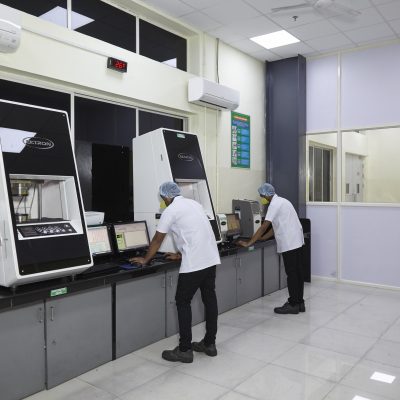EPDM Rubber
Durable, Dependable, Designed to Last

Some materials are built for the short run, and some are built to last. EPDM rubber compound material belongs to the second group.
EPDM stands for Ethylene Propylene Diene Monomer. It’s a synthetic rubber that’s designed to perform under tough conditions. Not just for a few weeks. But for years. That’s why industries that deal with harsh weather, heat, steam, or chemicals often rely on it.
Whether you’re sealing a car door, covering a flat roof, or insulating an HVAC unit, the job needs more than just flexibility. It needs a material that resists cracking, shrinking, and degrading. That’s where EPDM rubber compound material steps in.
Let’s break down what EPDM is, how it works, and why it’s one of the most widely used synthetic rubbers in the world.






What Is EPDM Rubber?
- EPDM rubber compound material is a type of synthetic elastomer. It’s made from three monomers: ethylene, propylene, and a diene. These come together to create a structure that resists heat, weather, and aging. Unlike many rubbers, EPDM doesn’t get brittle over time. It stays flexible.
- In real terms, that means it doesn’t crack when the sun beats down on it. It doesn’t wear out when exposed to ozone or heavy rain. It doesn’t give up when stretched or bent. That’s why it’s trusted across construction, automotive, electrical, and mechanical sectors.
Key Properties of EPDM rubber compound material
Let’s look at the properties that make EPDM compound a standout choice across applications:
Weather resistance
EPDM resists UV rays, ozone, wind, and water. That’s why it performs well outdoors for years without losing shape or strength.
Temperature stability
It can tolerate temperatures from -40°C to 120°C. In some formulations, it can go even higher.
Chemical tolerance
EPDM shows good resistance to polar substances such as water, steam, alcohols, acids, and alkalis. However, it is not suitable for petroleum-based oils or solvents.
Electrical insulation
EPDM is non-conductive. That makes it ideal for cable jackets and insulation materials in electrical applications.
Elasticity
Even after compression, it returns to its original form. That makes it perfect for gaskets and seals that are under constant pressure.
Longevity
Its service life can often extend to 20 years or more, depending on environmental conditions and usage.
These properties make EPDM rubber a safe, reliable, and long-term material for a wide range of applications.






Where Is EPDM Used?
- You’ve probably interacted with EPDM material today without even realizing it. It’s in your car, your appliances, even in the building you’re sitting in.
- Here are common applications:
- Automotive Seals and Gaskets: Car doors, hoods, and windows rely on EPDM rubber to block dust, water, and wind. It keeps the cabin insulated and reduces noise.
- Roofing Membranes: Commercial buildings use EPDM roofing sheets because they’re lightweight, durable, and waterproof. Over 20 billion square feet of roofing in the US alone uses EPDM.
- HVAC Systems: It’s used to insulate pipes and seal joints. It improves energy efficiency and prevents leaks.
- Electrical Insulation: It acts as a protective layer around cables and enclosures.
- Industrial Tubing and Hoses: EPDM is used to manufacture flexible tubing for water, steam, and some chemicals.
- Construction Seals: Window and door frames use EPDM strips to prevent air and water infiltration.
EPDM vs Other Rubber Materials
When you’re selecting a rubber compound, options include Nitrile (NBR Rubber), Neoprene, Silicone, and Natural Rubber. Each has its strengths. However, when you require a material that performs well outdoors and withstands extreme temperatures or weather, EPDM rubber compound is the clear choice.
| Feature | EPDM | Natural Rubber | Neoprene | Nitrile |
|---|---|---|---|---|
| UV Resistance | Excellent | Poor | Good | Poor |
| Ozone Resistance | Excellent | Poor | Moderate | Poor |
| Water Resistance | Excellent | Moderate | Good | Excellent |
| Heat Tolerance | High | Low | Moderate | High |
| Chemical Resistance | Polar solvents | Low | Moderate | Oils and fuels |
| Cost | Low to moderate | Low | High | Moderate to high |
How to Choose the Right EPDM rubber compound material
Not all EPDM is the same. The right formulation depends on what you need it for. Thickness, hardness, density, and curing methods can all be customized.
Here are a few things to look at:
Application
Sealing, insulating, roofing, or vibration damping — each use may require a different grade.
Temperature range
Match the compound’s tolerance with your working environment.
Chemical exposure
While EPDM resists many chemicals, check if any non-polar substances are involved.
Shape and size
EPDM can be made into sheets, rolls, cords, profiles, or custom-molded parts.
Certifications
For critical industries like food, pharma, or automotive, always check for ASTM, ISO, or FDA-grade options.






Why GB Gummi Is Your Right EPDM Partner
- At GB Gummi, we don’t just sell rubber. We build reliable compounds from scratch. Our team understands both the science and the application. We listen first, formulate second.
- What you get with us:
- Custom EPDM compounds for every need
- Fast turnaround times and scale-ready production
- Strict in-house quality control on every batch
- Clear documentation and traceability
- Technical advice and R&D support
- Whether you're an OEM, a processor, or a startup, we make sure your rubber performs in the field, not just in the spec sheet. If you’re looking for an EPDM rubber compound supplier that understands what your application truly needs, we’d be glad to help.
We Deliver Custom Rubber Compounds for Every Need
Contact Us For Professional Support And Guidance.
